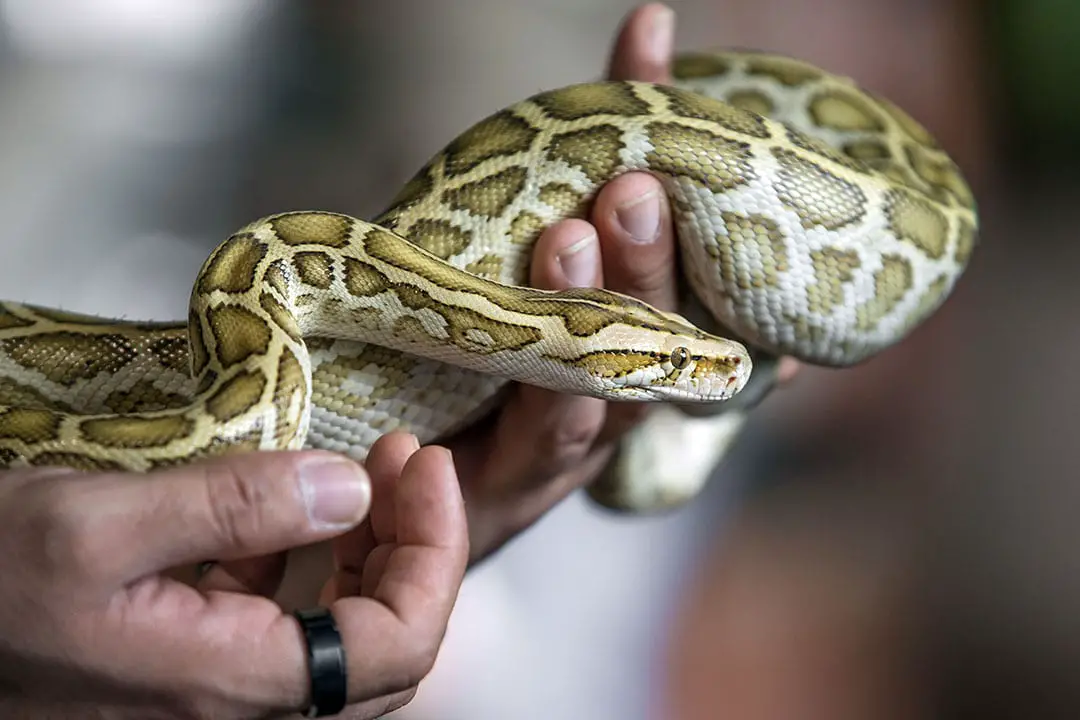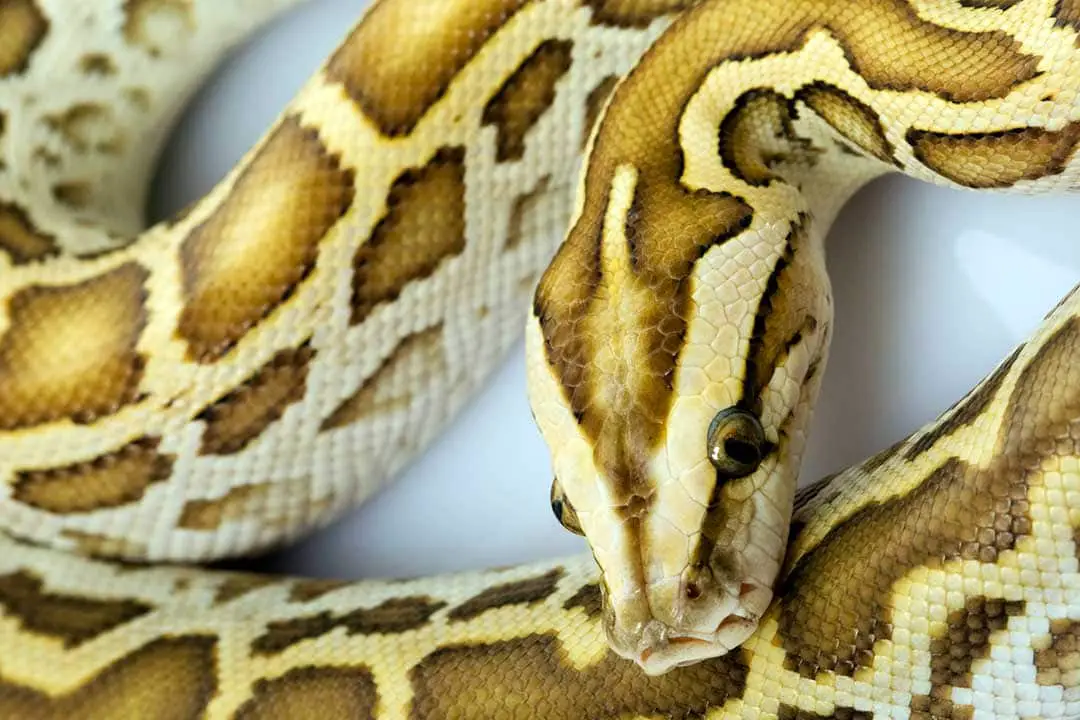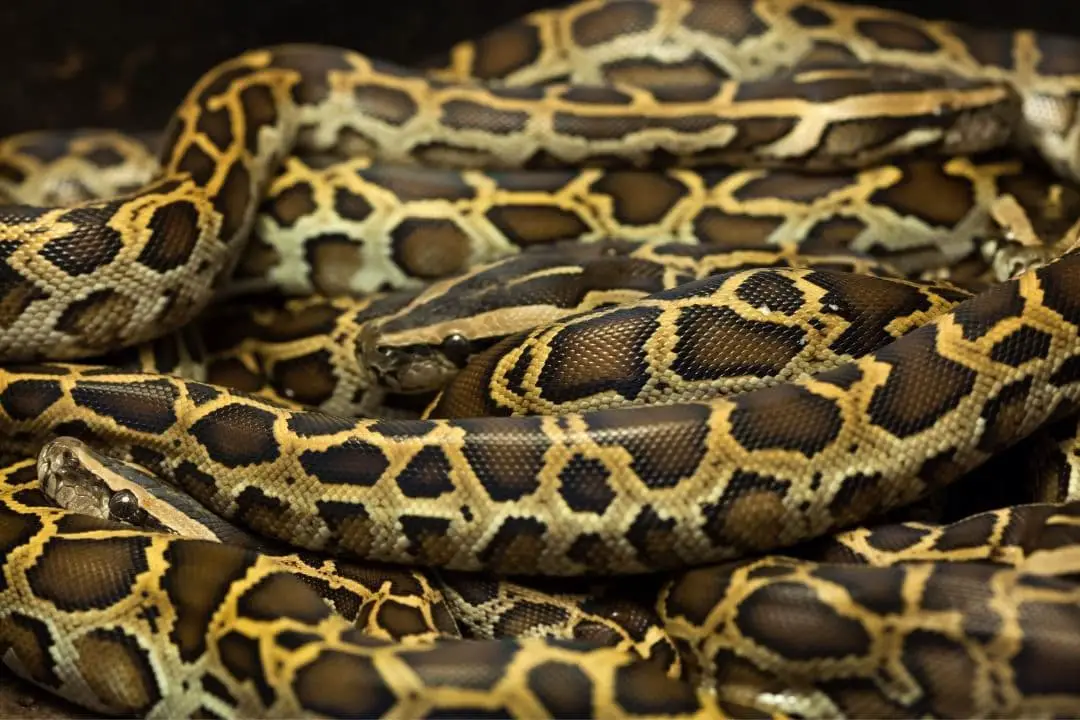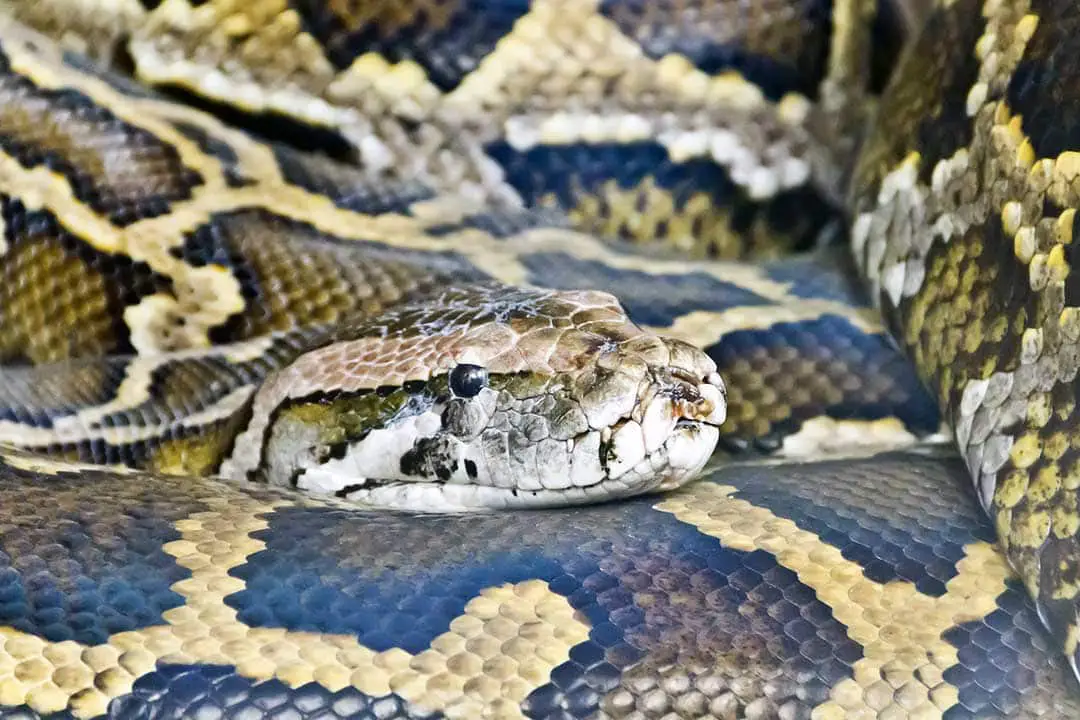Burmese pythons (Python bivittatus) are famous for being one of the most popular large pet snakes and invasive predators that have eaten the Everglades. Because of this duality, you may wonder whether these snakes are aggressive or friendly.
Are Burmese pythons aggressive?
On average, Burmese pythons are not aggressive. All but one known human fatality occurred in captivity. They tend to be docile pets but must be respected because of their size.
Free-Roaming Snakes
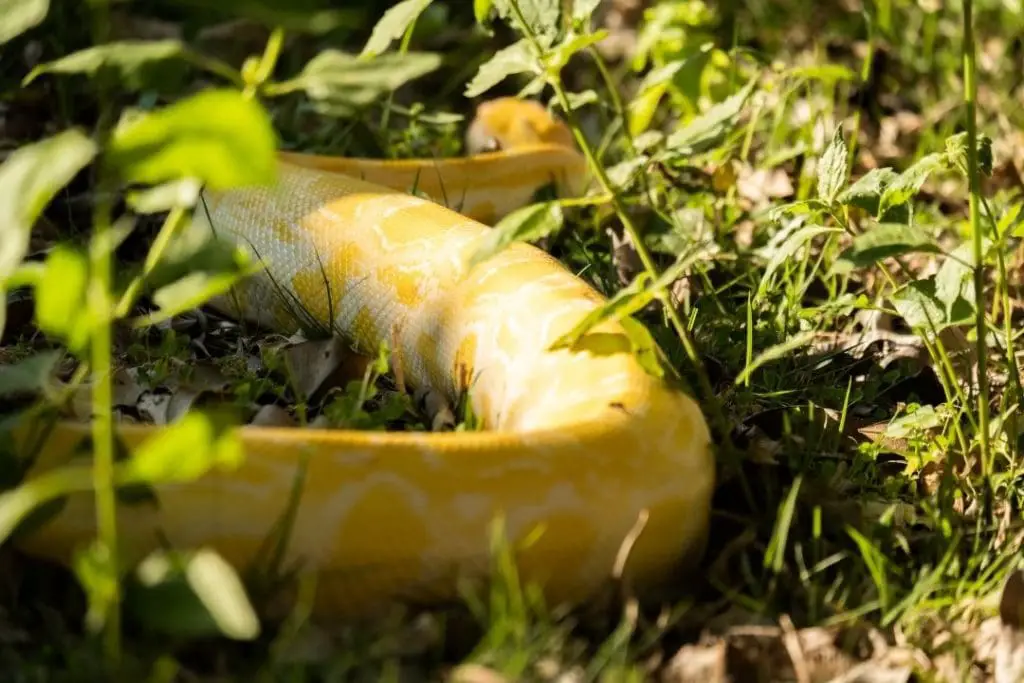
Wild and otherwise free roaming snakes are not particularly dangerous to humans. While they are large, humans are just too large to register as prey.
Scientists studying invasive pythons in the Everglades have reported strikes, but the vast majority do not even make contact. This is likely due to mistaken identity.
While Burmese pythons may eat deer and alligators, an adult human is simply too large for them to eat. Since they eat prey whole, snakes tend to be pretty good at judging meal size.
They do not try to constrict anything they don’t think they can swallow.
These snakes will bite in self-defense or to protect their eggs, but they tend to flee from humans. The only known fatality from a free-roaming snake was an infant a century ago.
Children could theoretically become prey of a python, but so far this has never happened.
These shy animals prefer to flee rather than confront a human. Burmese pythons are frequently caught alive by people trying to remove them from the Everglades.
These ambush hunters prefer directing their energy stores towards finding more food.
Captive Snakes
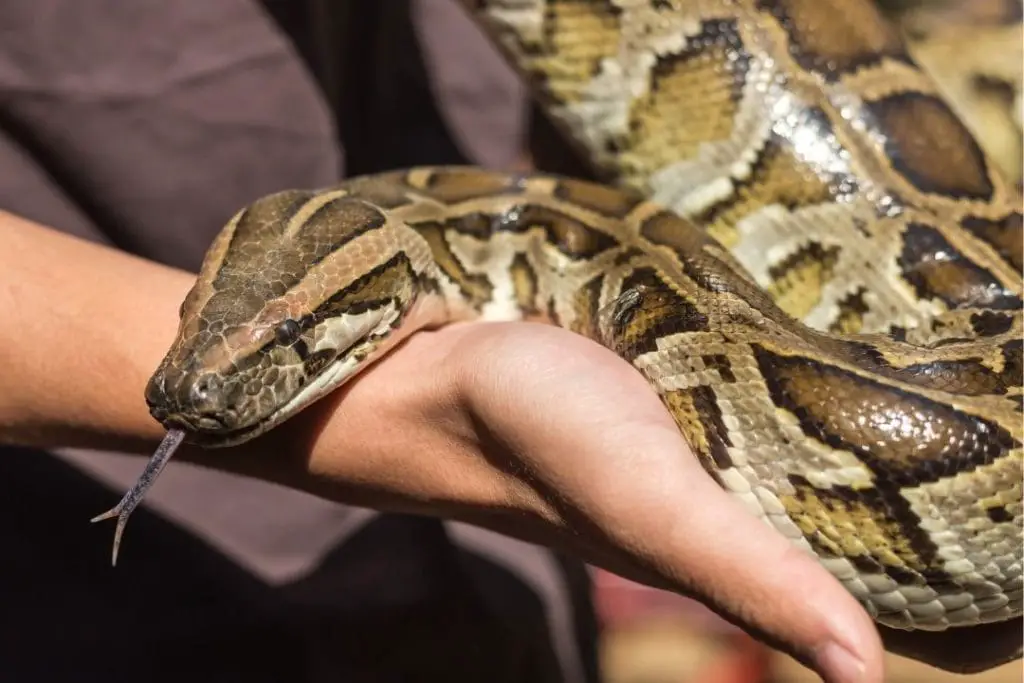
These are typically docile snakes.
Males can be a bit grumpy during the breeding season, but they are not typically aggressive to their owner during this time.
There have been fatalities from captive snakes. Seven people died between 1978 and 2009 because of captive Burmese pythons.
Many of these cases involved neglected animals or poor care and safety. Large pythons should never be handled alone and anyone who wants to handle any snake should know how to make a snake release a bite without injury to the animal.
It is dangerous to own a large animal. Any animal can bite its owner.
As a pet owner, you may have to do something your pet doesn’t like such as medicating the animal or treating a minor injury. All animals may bite in these situations.
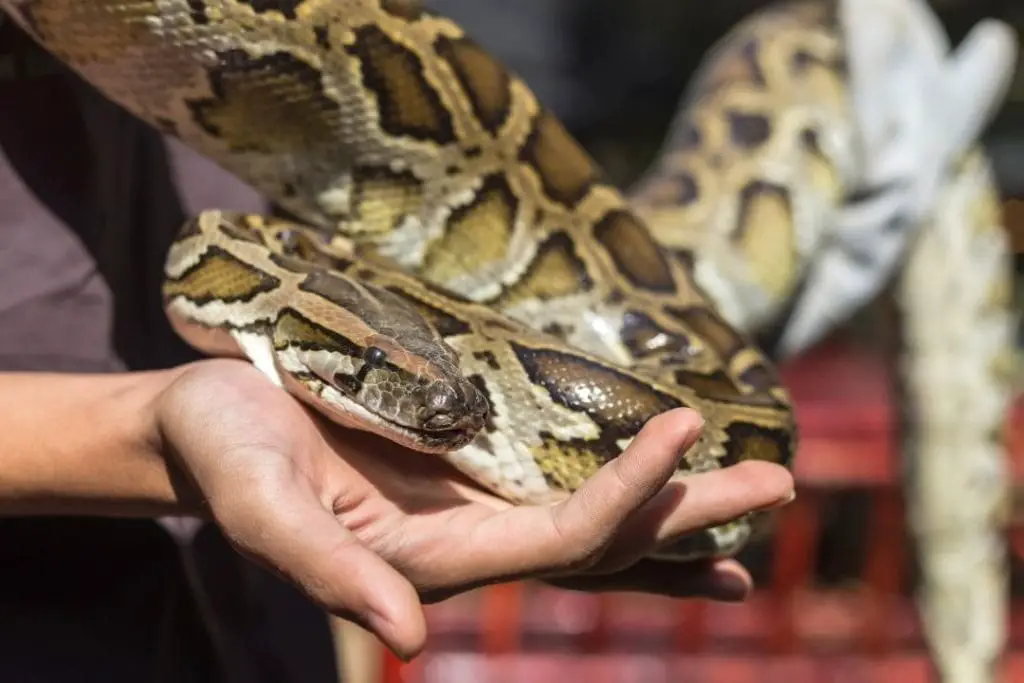
However, when you have an animal that can seriously injure or kill you like a Burmese python, the odds of this being serious are higher.
Anyone who wants to own a snake that gets longer than 6 feet long needs to be prepared for its care (see my burmese python care sheet here) with a large, strong enclosure and a helper.
A snake larger than 6 feet should only be handled or fed with a helper present. Both people should understand snake body language and be prepared to act in case of a bite.
Feeding time is probably the most dangerous time thi interact with a large snake. If the animal strikes at the food item, it can easily miss and hit the person offering the food.
It is generally recommended that large pythons are trained to take food slowly if possible. Food should also be offered with feeding tongs to help prevent mistaken strikes.
For large pythons and prey items always use something that keeps your hands and body far from the snake.
Even a very tame snake can have an accident or be in a bad mood and want to be left alone. If the snake is small, any injuries from a bite will be minor.
A large Burmese python can maim or kill a human. Burmese pythons are typically very docile, so an owner can easily assume the snake is fine with someone entering its enclosure for cleaning or replacing the water dish.
With these large snakes, always check to make sure the animal is relaxed and not hissing or giving other warning signs.
Safety Tips
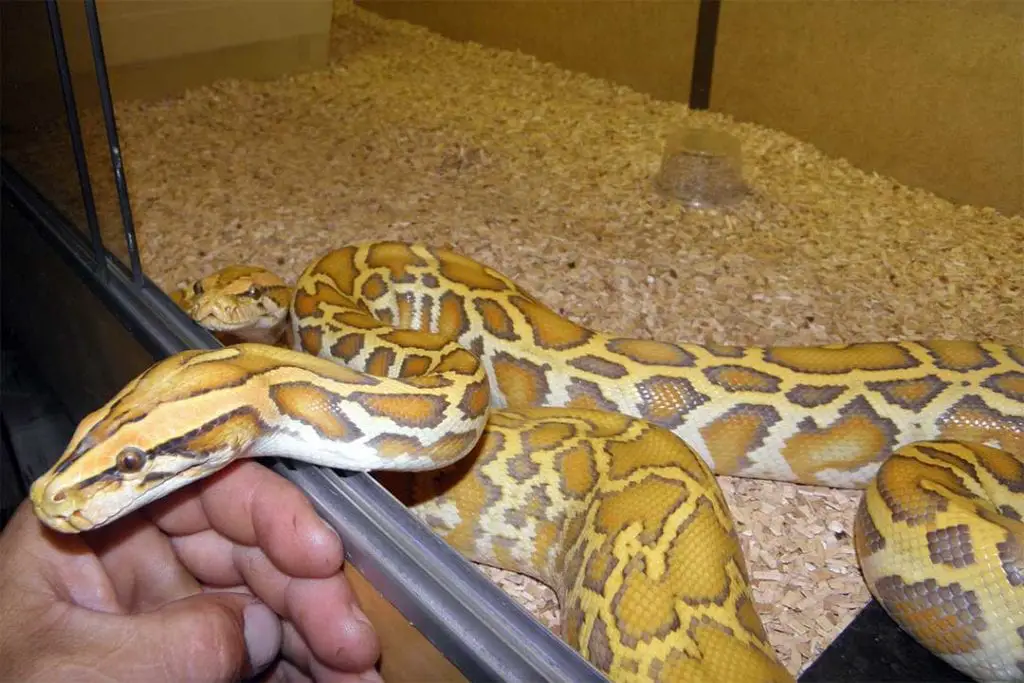
Humans have an unfortunate habit of ignoring potentially dangerous situations because they haven’t happened yet. Since most well-cared for Burmese pythons are docile it can be easy to forget that this snake can hurt a human.
Keeping basic safety in mind and always taking precautions will help keep you and your pet safe.
The first is making sure basic needs are met. A snake that isn’t being cared for well may lash out in self-defense. Many care mistakes can easily cause painful infections that make even the nicest snake crabby.
Always keep up on cleaning, temperature checks, and humidity. Keep the enclosure maintained and check at least every 6 months to make sure that all locks and potential escape points are secure. If you notice your snake pushing on part of the enclosure, check it once the snake leaves to make sure nothing is damaged.
You should also never allow children to interact with large snakes. Children can move quickly and frighten a snake. Only adults should handle a Burmese python or help care for it.
If you need to enter the enclosure for any reason, make sure you have a helper in the room and watch the snake. Check to make sure it is relaxed throughout the time you are in range of the snake.
If you have to move the snake for any reason, be sure you don’t hurt it and that it is calm. Feeding should only be done with a helper, same with moving the snake.
Train your snake so it doesn’t panic if you need to help remove stuck shed or if you need to take it to the vet. Be sure to talk with your vet about what to do if the snake is ever injured.
Make a plan in advance so you can treat any injuries or move a hurt or sick snake to the vet with the smallest chance of harm to humans or the snake.
Being prepared will help prevent most potential risks. Making a number of emergency plans will help keep you calm and let you manage a crisis as it happens.
Conclusion
Burmese pythons are not aggressive towards humans.
They are just large and strong, so defensive bites or a mistaken feeding bite can turn fatal.
Respect the snake and keep this in mind if you interact with one. If you have any comments or questions, please leave them below.
